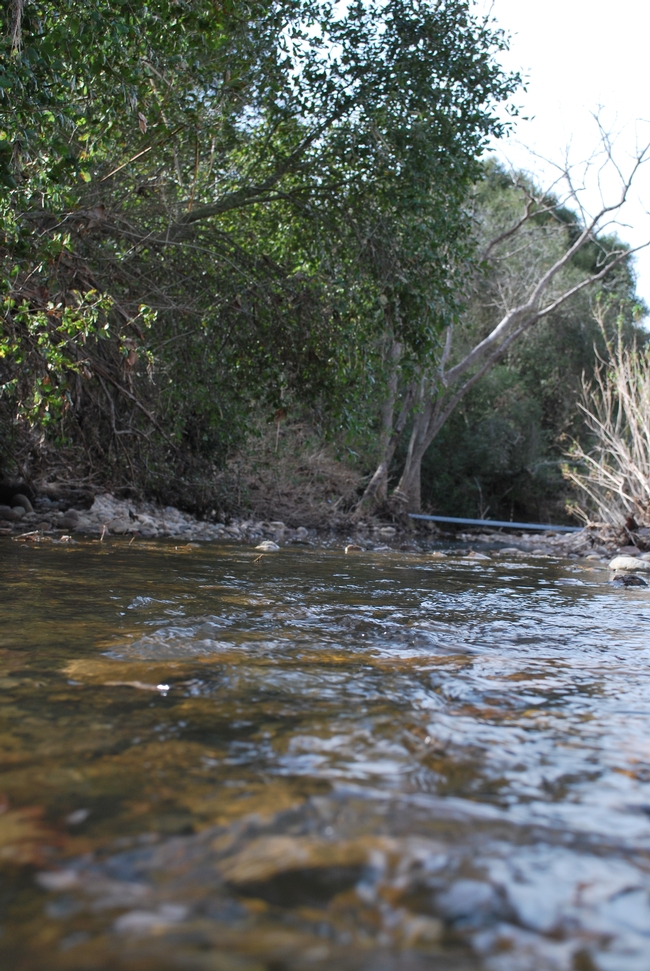
Leaves and other organic material that fall from branches, also known as thatch, contribute to the richness of the soil beneath, allowing for healthy undergrowth. The number and density of the flora that inhabit riparian areas create a sub climate, allowing for cooler summers and warmer winters in the stream community. They also provide hiding places for the animals and a stabilizing system of roots that prevents soil erosion. These are only a handful of the benefits that oak woodlands provide for stream communities.
In San Diego County, there are five major river systems; Santa Margarita River, San Luis Rey River, San Dieguito River, San Diego River, and Sweetwater River. At varying frequency and locations, all of these rivers have oaks along their banks. Oaks may also be found along the many smaller creeks that support the watershed and riparian stream communities. The San Diego River alone has over 20 smaller creeks. These creeks are home to many animal and plant species, including the endangered Arroyo Toad, Southwestern Pond Turtle, and Bell’s Vireo. These species, along with non-endangered native species are in danger of being driven out by invasive pests.
Goldspotted oak borer (GSOB) Agrilus auroguttatus is an invasive pest contributing to the on-going oak tree mortality occurring on federal, state, private, and local Native American lands in San Diego County. Without native oak tree and native shrub cover bigger issues ensue, including harm to animals, increased risk of flood and fire, and a degradation in water quality. The loss of oak trees can directly impact a whole community of insects, fish, small mammals, and even the existence of a healthy stream.
There are federal and state environmental protection laws in place that help reduce or control the impacts of invasive species. Many counties, communities and land conservancy groups have adopted ordinances and programs to protect our environment and our watersheds from harm.
For additional information on this topic visit: http://ucanr.org/u.cfm?ids=2622, http://www.sdcwa.org/habitat-conservation, and http://ucanr.org/sites/oak_range/